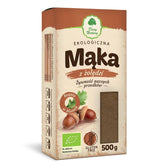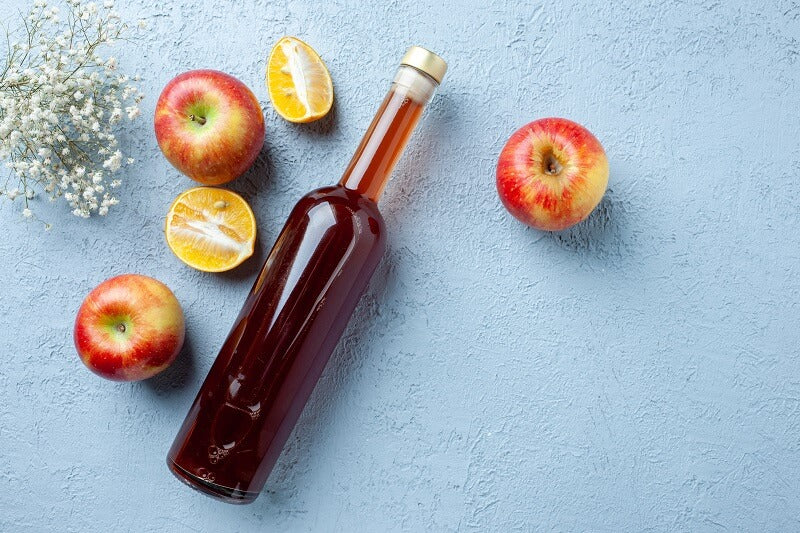Types of vinegar – is vinegar good for our body?
Contents:
- What exactly is vinegar and how is it made?
- Is acetic acid good for our body?
- Can acetic acid be harmful?
- The most popular types of vinegar – properties
Vinegar has been known to mankind for a very long time. Currently, it serves as a popular condiment on our tables, as an addition to various dishes, or even as a preservative for canned goods. Therefore, it's not surprising that there are many proponents and detractors. This is why many facts and myths have arisen around it. Its effect on our body's functioning is also often controversial. For this reason, we decided to examine the matter in more detail and answer a few questions. Can vinegar have a positive effect on our body, or is it perhaps quite the opposite? We'll try to verify this.
What exactly is vinegar and how is it made?
Vinegar is nothing more than an aqueous solution of acetic acid. It is produced by the fermentation of ethyl alcohol by acetic acid bacteria. The process itself is often referred to as pseudofermentation due to the presence of oxygen. Currently, three methods are most commonly used to produce vinegar, with the resulting vinegar concentration ranging from approximately 6 to 10%. The first of these is the Orleans method. It is one of the oldest known methods. It originated in France and was used there in the Middle Ages. In the classic form, vinegar containing acetic fermentation bacteria is poured into barrels. Then, wine is added to them at weekly intervals. It is worth noting that small holes are drilled in these barrels to allow consistent oxygen access. Once the alcohol is converted to vinegar, it is drained through a special tap. Then the entire process is repeated. However, about 15% of the vinegar remains in the barrels to initiate further fermentation. Another method is so-called deep soaking, or immersion soaking. In short, it involves injecting a large amount of oxygen into a tank containing an alcohol solution along with acetic fermentation bacteria. Thanks to this process, fermentation is much more efficient and occurs much faster. Also worth mentioning is the drip method. In this case, it involves a tank filled with beechwood shavings. These are inhabited by acetic fermentation bacteria. Then, using various new technologies, the alcohol solution is slowly passed through the sawdust. Once the alcohol reaches the bottom, it is collected and passed through again. The process is repeated until vinegar of the appropriate concentration is obtained.
Is acetic acid good for our body?
It's worth noting that the properties of a particular vinegar and its effect on our body largely depend on the raw material from which it was made. Acetic acid itself can also have many health-promoting effects. It's worth noting here that its bad reputation is closely linked to its excessive consumption. Almost all products can be potentially harmful and have side effects if used incorrectly. However, a moderate to low intake of acetic acid is extremely healthy. It can slightly lower blood pressure and blood sugar levels. It will also act as a form of support for our cardiovascular system and reduce the risk of some of its diseases. This is due to the effect of acetic acid, which reduces the amount of bad LDL cholesterol. This allows us to minimize excessive deposits in the blood vessels and thus reduce the risk of strokes, heart attacks, and atherosclerotic plaques. Furthermore, due to the acidic reaction of this acid, it can also support our stomach in cases of low acidity and problems with protein digestion. Interestingly, it can be great for people looking to lose weight. This is due to its appetite-stimulating properties. Furthermore, it also directly affects fat burning. Both factors certainly contribute to weight loss.
Can acetic acid be harmful?
The common saying that anything, depending on the concentration and amount consumed, can be a potential poison applies here as well. However, concentrated acetic acid can cause skin burns and severe allergic reactions. Fortunately, commercially available vinegar has a much lower concentration. However, this doesn't change the fact that we shouldn't overdo it. It's considered best to consume it twice a day, about 2 tablespoons each time. This equates to about 20 grams per dose. This way, the risk of side effects is very low. Also, remember not to consume vinegar on its own, as it can burn the mucous membranes of the throat and esophagus. It's best to dissolve it in water or add it to various dishes. However, excessive consumption can leach calcium from bones. This causes them to lose their hardness and strength, but can also make them more prone to fractures. Sometimes, it can also cause damage to other parts of the digestive tract, including the stomach. Excess vinegar also flushes potassium from our bodies. People taking diuretics and antidiabetic drugs, including insulin and digoxin, should avoid consuming vinegar.
The most popular types of vinegar – properties
Vinegar can be made from a variety of raw materials. However, some types can be found almost everywhere. For this reason, we decided to take a closer look at some of the most popular vinegars available on the market.
Vinegar
Spirit vinegar is currently one of the most widely used vinegars. It consists of spirit previously diluted with water and is the basic product for acidification in the food industry. It is also used to preserve all kinds of products, especially canned goods. It has no particular taste or odor. Its flavor is sharp and distinctly sour, and it is characterized by an extremely intense acetic acid smell. It is typically found in a concentration of 6 to 10%.
Apple cider vinegar
Apple cider vinegar is the most popular fruit vinegar, considered by many to be the healthiest. It's made from apples, whose skins contain yeast that converts sugar into alcohol and then vinegar. Traditionally, it's made using the Orleans method and then aged in barrels for up to two years. It's highly prized for its organoleptic and health-promoting properties. It has a distinct apple flavor, is slightly tart, and has a delicate vinegar aroma. It's used as an important ingredient in all kinds of marinades, pickles, and various dressings and sauces. It also contains a wealth of nutrients, including B vitamins, biotin, vitamin C, and folic acid. It also contains plenty of enzymes, pectins, polyphenols, lactic acid, and various amino acids. It's also rich in magnesium, iron, potassium, sodium, phosphorus, and silicon.
Balsamic vinegar
Balsamic vinegar is certainly the finest, but also the most expensive, type of vinegar. It originates from Italy, and its production process is extremely lengthy and complex. It is made from the must of white grapes (most commonly Trebbiano). The harvested grapes undergo a long boiling process until the sugar content in the solution reaches 30%. Fermentation then occurs. This is a sensation, as alcoholic and acetic fermentation occur simultaneously, rather than sequentially. Special yeasts adapted to life in very high sugar concentrations are used for this purpose. Vinegar prepared in this way requires long aging in barrels. This is necessary to obtain a dense structure, but also the right flavor. Such aging must last at least 12 years, but the finest balsamic vinegars can age in them for up to 25 years or more. This process concentrates the vinegar, and the older it is, the stronger its organoleptic properties. Also worth mentioning is a method called solera. This involves placing grape must in the oldest barrels, and this process is repeated year after year. The best vinegars can be up to 100 years old.
Vinegar
Wine vinegar is the most popular vinegar in Mediterranean countries. It is made from white or red wine and then undergoes acetic fermentation. The best wine vinegars are made using the traditional Orleans method and then aged in barrels for about two years. Their flavor is quite mild but also complex. This depends primarily on the wine used in its production, but also on the variety and country of origin. Popular examples include French Champagne vinegar and Italian Pinot Grigio vinegar.
Rice vinegar
Rice vinegar has enjoyed great popularity in Asian countries. Interestingly, we can distinguish three basic varieties. The most popular is, of course, the white variety, but there are also red and black varieties. It is made from white rice, has a very delicate taste and aroma, and a simple flavor and aroma profile. It is most often added to sushi and salads. The other colored varieties are made from red and black rice.
Vinegar can be a very interesting addition to your daily diet, but you shouldn't overdo it. However, when used in moderation, it has a number of health-promoting properties. It's worth noting that, given the variety of varieties, everyone will find their favorite. We also recommend experimenting with different types. It can be a particularly interesting experience, as each of them has a different flavor and aroma profile and can be used as a seasoning for various dishes.
THE PUBLISHER'S CHOICE
Dried plums 1 kg BIOGO
- €7,01
- €7,01
- Unit price
- / per
Dried White Mulberries 500 g ORGANIC
- €5,84
- €5,84
- Unit price
- / per
Almonds 1 kg BIOGO
- €11,69
- €11,69
- Unit price
- / per
Cranberries sweetened with apple juice organic 1 kg BIOGO
- €16,37
- €16,37
- Unit price
- / per
Dried dates 1 kg BIOGO
- €4,21
- €4,21
- Unit price
- / per
Unpeeled buckwheat groats 1 kg BIOGO
- €2,81
- €2,81
- Unit price
- / per
Walnuts 800 g BIOGO
- €8,65
- €8,65
- Unit price
- / per
Peeled sunflower seeds 1 kg BIOGO
- €3,04
- €3,04
- Unit price
- / per
PULLED ORGANIC SUNFLOWER SEEDS 1 KG BIOGO
- €4,44
- €4,44
- Unit price
- / per












































































































































